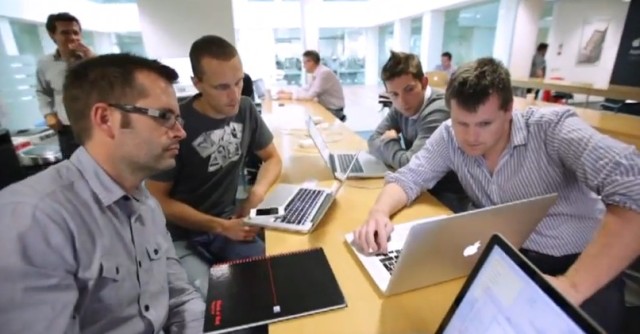
- #Mac computers at work mac os#
- #Mac computers at work portable#
- #Mac computers at work mac#
- #Mac computers at work windows#
Its translucent plastic case is considered an industrial design landmark of the late 1990s, credited to Apple design chief Jony Ive. The iMac G3 all-in-one computer was introduced in 1998. IMac G3 marketing heavily emphasized its design and Internet capabilities


#Mac computers at work mac#
Apple completed the elimination of the Macintosh product name in 1999 when "Power Macintosh" was retired with the introduction of the Power Mac G4.
#Mac computers at work mac os#
Apple also stopped licensing Mac OS to Macintosh clone manufacturers, : 256 and changed the lineup's name from Macintosh to Mac. All were successful due to their high performance, competitive prices and aesthetic designs, and helped return Apple to profitability. Jobs simplified the notoriously complex Mac product line down to only four products: an unnamed consumer laptop (later revealed to be the iBook), the PowerBook, the iMac, and the Power Mac, in order to "put the A-team" on each one and simplify marketing. Though he was initially brought in as a "adviser", he rapidly gained significant influence, and was appointed interim CEO on September 16, 1997. Following the company's purchase of NeXT, Steve Jobs returned to Apple on February 7, 1997. Executives eventually settle on acquiring Steve Jobs's NeXT in order to base their next-generation Mac OS on NextSTEP, which had a modern Unix architecture. Apple's computers competed against Macintosh clones, hardware manufactured by third parties to whom Apple had licensed System 7, which cannibalized the sales of Apple's higher-margin Macintoshes.ġ998–2005: Return of Jobs and revival įor years, Apple had "desperately" tried to develop a successor to the aging Mac OS, which lacked proper multitasking and memory protection, and was prone to crashes.
#Mac computers at work windows#
Even after the transition to the superior PowerPC-based lineup in the mid-1990s, the falling prices of Wintel PCs, poor inventory management with the Macintosh Performa, and the release of Windows 95 contributed to continued decline of the Macintosh's market share. In 1994, Apple's marketshare fell to 8.5% compared to market leader Compaq's 10.3%. The Power Macintosh line, the first to use the new chips, proved to be highly successful, with over a million PowerPC units sold in nine months. In 1994, Apple abandoned Motorola CPUs in favor of the RISC PowerPC architecture developed by the AIM alliance of Apple, IBM, and Motorola. Apple discontinued the use of Frog design's Snow White design language, and brought hardware design in-house with the Apple Industrial Design Group. System 7 introduced virtual memory and co-operative multitasking. The second generation of Powerbooks was the first laptop in the world to have a trackpad, built-in Ethernet, stereo speakers, and an integrated expansion bay.
#Mac computers at work portable#
Apple continued to release new models, including the PowerBook lineup, which were the first portable computers with the keyboard behind a palm rest and a built-in pointing device (a trackball) in front of the keyboard.

Over the 1980s, the Macintosh became dominant among creative professionals and in schools.

Steve Jobs partially took the inspiration for the GUI from Xerox PARC, an R&D institute that had partnered with Apple. It had an all-in-one design, and pioneered the graphical user interface (GUI), and was described as a "revolution" by the New York Times. It was pivotal in starting the desktop publishing revolution. The first Macintosh, unveiled in 1984, was the first successful mass-market all-in-one personal computer with a graphical user interface, built-in screen, and mouse. Steve Jobs with the Macintosh, January 1984


 0 kommentar(er)
0 kommentar(er)
